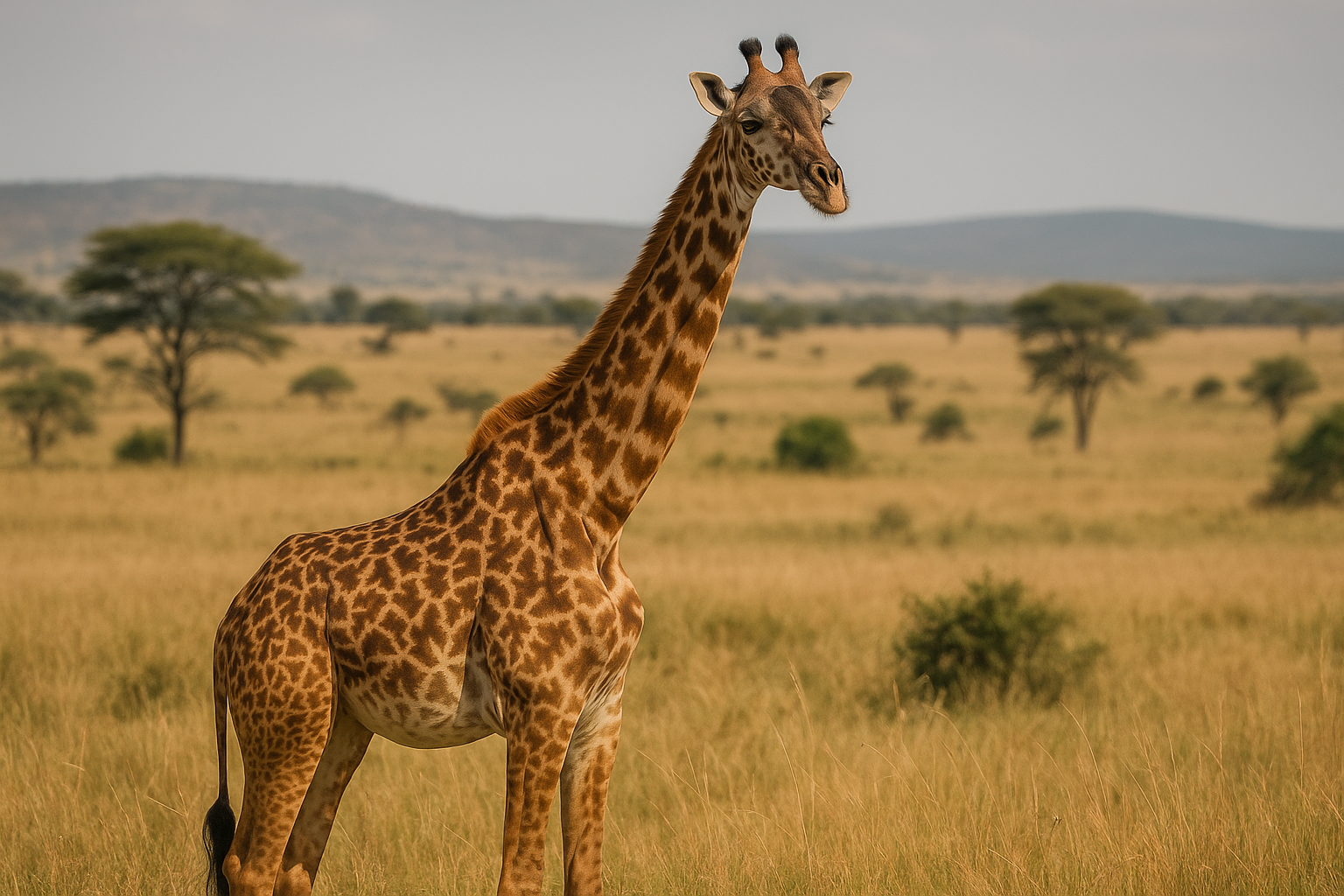The Wild Watchmen: Unmasking the Life of the Olive Baboon
I. Introduction: A Familiar Face of the Wild
In the early hours of dawn across Africa’s open woodlands and savannahs, a sharp call echoes through the trees—a warning, a greeting, a shift change in nature’s eternal watch. Climbing from acacia trees and termite mounds, a troop of Olive baboons (Papio anubis) begins its day. Intelligent, adaptable, and endlessly social, the Olive baboon is one of the continent’s most visible and intriguing primates.
Their story is one of survival, strategy, and complexity—an unfolding drama written in grooming sessions, territorial disputes, and clever raids on farms and tourist camps.
II. Scientific Classification: The Blueprint of the Baboon
| Taxonomic Rank | Classification |
|---|---|
| Kingdom | Animalia |
| Phylum | Chordata |
| Class | Mammalia |
| Order | Primates |
| Family | Cercopithecidae |
| Genus | Papio |
| Species | Papio anubis |
Why this classification?
-
Animalia: Multicellular, mobile, and heterotrophic.
-
Chordata: Possesses a backbone and spinal cord.
-
Mammalia: Warm-blooded, fur-covered, and nourishes young with milk.
-
Primates: Known for advanced brains, hand-eye coordination, and social behavior.
-
Cercopithecidae: Old World monkeys, which includes baboons and macaques.
-
Papio anubis: Named after the Egyptian god Anubis for their dog-like muzzle.
Among the five species of baboons, the Olive baboon is the most widespread and versatile, named for its olive-colored fur and thriving in ecosystems from savannahs to rainforests.
III. Geographic Range and Habitat
The Olive baboon has a massive range, spanning more than 25 African countries, from Senegal in the west to Ethiopia in the east, and down to Tanzania and Uganda. Its success comes from extreme adaptability:
-
Habitats: Grasslands, river valleys, acacia woodlands, rainforest edges, and even alpine regions.
-
Sleeping Spots: Cliffs, trees, or rocky outcrops used as nighttime refuges.
-
Home Ranges: Can be over 15 square kilometers, overlapping with other troops.
They are true generalists, navigating human presence, climate variations, and predators with equal cunning.
IV. Physical Features: Built for Life on the Ground and in the Trees
-
Coat: Coarse, olive-colored fur with lighter undersides.
-
Face: Long, dog-like muzzle with expressive brown or amber eyes.
-
Size:
-
Males: up to 30 kg (66 lbs)
-
Females: up to 15 kg (33 lbs)
-
-
Tail: Long, arched tail not used for grasping.
-
Sexual Dimorphism: Males are significantly larger and bear long, sharp canine teeth used in displays and fights.
A baboon’s face tells a story—one of cunning, emotion, and subtle communication. Their eyes do not just see; they observe.
V. Society and Structure: Troops with a Code
Olive baboons live in large multi-male, multi-female groups known as troops, often numbering 20 to 150 individuals.
Hierarchies:
-
Male hierarchy is competitive and often shifts due to fights and alliances.
-
Female hierarchy is stable and matrilineal, passed from mothers to daughters.
-
Males may form friendships with females and their offspring, gaining trust and mating opportunities.
Communication:
-
Vocalizations (barks, screams, grunts)
-
Gestures (lip-smacking, eyebrow raising)
-
Physical contact (grooming, hugging, slapping)
Their societies are strategic and emotionally rich, a constant dance of dominance, cooperation, and negotiation.
VI. Diet and Foraging: A Taste for Everything
Olive baboons are omnivores and opportunistic feeders.
Typical Diet:
-
Fruits and seeds
-
Leaves and roots
-
Insects and eggs
-
Small mammals and reptiles
-
Human crops and garbage (in fringe zones)
They spend most of their day foraging—searching, digging, cracking, chewing. Their digestive systems are adapted for high fiber, and their intelligence enables them to remember food sources and teach routes to others.
VII. Reproduction and Parenting
Mating:
-
Year-round reproduction, though peaks occur during rainy seasons.
-
Males compete for access to fertile females (signaled by sexual swelling).
-
Copulation is brief but often repeated.
Gestation and Birth:
-
Gestation lasts 6 months.
-
Infants are born with black fur and cling tightly to mothers.
-
Mothers are deeply protective, grooming and carrying infants for months.
Infant Care:
-
Infants often nurse for 6-12 months.
-
Older females assist in carrying and protecting infants (a behavior known as alloparenting).
-
Males sometimes "adopt" infants to form alliances with their mothers.
Baboons raise their young in complex social classrooms, where experience, imitation, and discipline play critical roles.
VIII. Predators and Defense Strategies
Natural Predators:
-
Leopards
-
Lions
-
Hyenas
-
Crocodiles
-
Eagles (for infants)
Defense:
-
Alarm calls and group cohesion
-
Males charge or display canines
-
Troop will mob smaller predators
-
Infant kidnapping as a deterrent (males may take infants to stop fights)
Olive baboons are not easy prey. Their size, strength, and intelligence make them formidable adversaries, especially in large numbers.
IX. Olive Baboons and Humans: Friends or Foes?
Olive baboons walk a fine line in human spaces:
Positive Interactions:
-
Featured in research and conservation education.
-
Popular in ecotourism and safari parks.
-
Vital part of the food web and seed dispersal.
Negative Interactions:
-
Crop raiding in farming areas.
-
Breaking into tourist camps or homes.
-
Seen as pests in some communities.
Cultural Perceptions:
-
Revered in some traditional stories.
-
Feared or ridiculed in others.
Their intelligence, adaptability, and resourcefulness have made them both respected and reviled, often depending on context.
X. Conservation Status: Widespread but Not Invulnerable
-
IUCN Status: Least Concern
-
Threats:
-
Habitat loss due to deforestation and agriculture.
-
Conflict with humans in rural settlements.
-
Bushmeat hunting and illegal wildlife trade.
-
While Olive baboons are not endangered, their frequent contact with humans puts them at risk of disease transmission, persecution, and displacement.
Conservation efforts focus on education, protected areas, and conflict mitigation, ensuring humans and baboons can coexist.
XI. Unique and Fascinating Facts
-
Olive baboons can live over 40 years in captivity.
-
They have been observed washing food in water before eating it.
-
Males carry infants during conflict to prevent attacks—called “infant shields.”
-
Troops have distinct cultural behaviors, like grooming styles and foraging tactics.
-
They are capable of understanding basic arithmetic and sequences in lab settings.
These are not just monkeys—they are strategists, protectors, and personalities.
Conclusion: The Sentinels of the African Wild
To watch a troop of Olive baboons is to witness nature’s intelligence at work. They adapt, organize, empathize, and survive in some of the harshest—and most human-impacted—landscapes in Africa.
As guardians of their territories, they remind us that wildness is not chaos, but order beyond our comprehension. We must protect that order—before it becomes only a memory in our documentaries and textbooks.












No comments:
Post a Comment